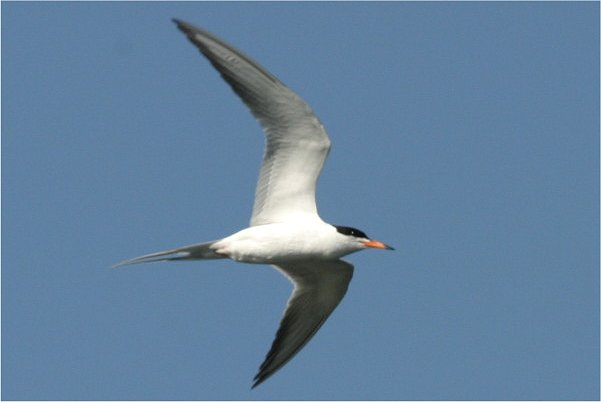
Date: 2003-06-16
Lens: Canon 400mm F5.6

 Forster's Tern
Sterna forsteri
Forster's Tern
Sterna forsteri
 Description
DescriptionThis bird is similar to the Common Tern and wasn't recognized as a separate species until 1831. The two birds prefer different habitats, the Common Tern likes pebbly beaches and rocky islands, whereas the Forster's prefers marshes. It is named after a German pastor-naturalist, Johann Reinhold Forster (1729-1798), who accompanied Captain Cook around the world in 1772.
General: White face, foreneck, breast, and belly. Long, deeply forked tail, with dark inner edges and white outer edges on the longest feathers. Pale gray back and wings. Sexes similar. 14-15 inches in length.
Adult Alternate: Black cap without crest. Thin, pointed orange bill with black tip.
Adult Basic: Lacks black cap, but has distinctive black patch behind and around eye. Black bill. orange legs. The molt to basic plumage begins in July and ends around early fall.
Immature: Black bill and legs. First-year birds generally have dark secondaries and outer primaries. Slightly more extensive black mask. Second-year birds are generally very similar to adults in alternate plumage but often have darker primaries and secondaries and white tips to feathers in the black cap. Juveniles have a pale brown back, orange legs, and a black bill.
Marshes, lakes, and beaches.
 Nesting
Nesting3-4 buff eggs with spots. The eggs have a 23-24 day incubation period. Fledging occurs in ? days. The nest is a platform of dead grass lined with finer grasses. Nests in colonies.